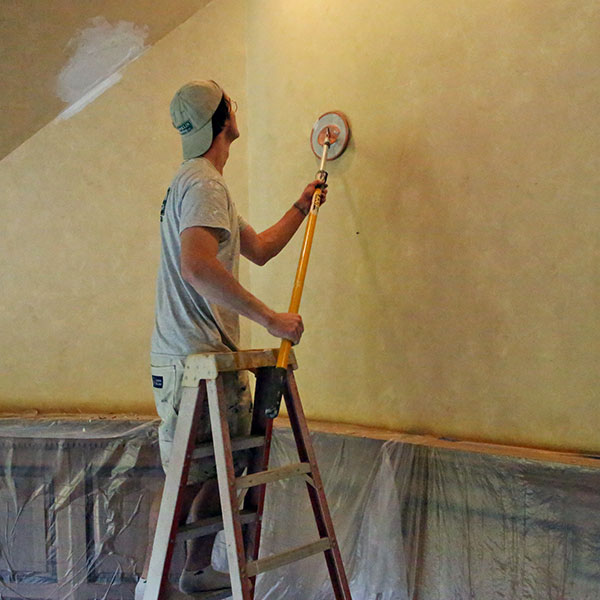I know you’ve been there. You get the urge to repaint a room in your home, maybe a bedroom wall and the thought crosses your mind that some sort of prepping should occur. Do you need to wash the stick figure off the wall that your son drew when he was 8? or should you prime the walls like you’ve seen in the design shows? Should you fill in the hole caused by the doorknob, or should you just go for it? Or perhaps you’re stuck on trying to figure out how to remove the wallpaper. If you are like many of us, you have plenty of experience just winging it, and what happens? You end up with a horrific paint job where all the things you tried to cover up are still clearly visible. This does not have to be a reoccurring scenario all of this can truly be avoided with proper prepping which includes making sure the walls are clean and dust-free.
Dents and Dings
These small holes and imperfections may seem insignificant, but they can really ruin a paint job. The way to deal with them is to brush away any debris and apply any type of smooth, quick-drying spackle with a putty knife. Waiting times may differ, but 24 hours is usually a standard time to allow the spackle to dry and harden, then sand it smooth.
It may seem like a pain but taking a few minutes to attend to the dents and dings in your walls will guarantee a better-looking room.
Small Holes
Small holes (anything up to two inches) can usually be repaired with a patch kit that can be purchased at your nearest grocery store or hardware store. The instructions are easy to follow and involve placing a mesh patch over the hole, applying the compound, waiting 24 hours, and sanding smooth.
These are fairly small holes to repair but if you have damage bigger than the size of a hammerhead the best course of action is to contact a professional. Large holes can need much more attention and improper fixes can often cause bigger holes, peeling paint, and other issues.
 Repaint
Repaint
Once you’ve prepped your walls and addressed the damage by repairing any holes, and sanding it smooth, you can begin the process of repainting. When repainting a whole room, it’s important to stay away from high-gloss paints and specific textures and finishes that can draw attention to wall damage. For a smoother look choose paint that is either in eggshell, satin, or matte finish.
If you are determined to use a faux finish, add texture, or use a high gloss paint, priming the wall first will help cover up your repair work and allow the paint to be applied more smoothly. This is a step that often gets skipped and rooms suffer for it. Priming the walls especially if you are doing any specialty finishes is a must.
As always, the pros at Franklin Painting are ready and willing to help with all of your painting needs, from wallpaper removal to exterior painting we’ve got you covered. Give us a call today!
Franklin Painting
877.646.7774
Contact us Online

Frank Campanelli, the esteemed founder of Franklin Painting LLC, has been leading the company since 1986. He takes immense pride in the stellar reputation his dedicated team has built by consistently delivering top-notch service to each customer.


 Repaint
Repaint